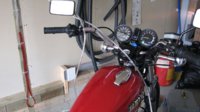Fochops
XS650 Enthusiast
Can anybody here give me a step by step on how to set my timing on points ignition? I've searched the sight and can't find a good how to... Thanks for any help! I love this site, it has helped me get through so much already! You guys are the SH!T!!!


